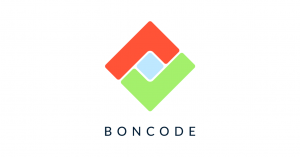Internal benchmarking is a valuable tool for businesses seeking to optimize their software development processes, improve product quality, and foster a culture of continuous improvement.
Visualizing internal benchmarking data through the BonCode dashboard is a quick and powerful way to see, at a glance, what’s going well, and where improvements are needed. Best of all, it can be used to support decision-making at every level.
In this blog post, we uncover the business benefits of internal benchmarking for software quality, and how it can be the driving force behind a culture of continuous improvement.
What is internal benchmarking for software quality?
Imagine you have more than one software development project under your responsibility. Wouldn’t it be valuable to have those projects stimulate each other? Let project A learn the best practices from project B. Let project C not make the same mistake that project D made.
To do that, you need the ability to compare your projects with the same yard stick. Not once, but with a certain cadence, say every sprint, or every quarterly meeting. That’s what benchmarking is about.
Internal benchmarking allows you to compare a set of projects, teams, systems or current software quality measurements with historic ones to identify two things: best practices, and areas for improvement (including gaps). Applied to software quality, the scope is broad, covering projects, teams, and tech stacks.
Our tool-based consultancy services for software assessment and software monitoring take a deep-dive into your source code, facilitating clear and insightful internal benchmarking. Whatever your set-up – a single tech stack or multiple tech stacks, internal teams or external development teams – we’ve got quality benchmarking covered.
Why is it important for your business?
Creating and maintaining a culture of continuous improvement is no easy feat, especially when you’re managing multiple teams and technologies. Fact-based decision-making around software quality requires clear points of reference and comparison.
For example, if you use multiple service providers for software development, how do you know which one is performing well and which one needs to improve? Are they all sticking to your best practices for development? Without independent, impartial assessment and monitoring, it can be hard to tell.
What you need are relevant and meaningful metrics. Here are 3 metrics that many companies find valuable for measuring and monitoring software quality:
- Decomposition: Bigger components are harder to change. Breaking them down and working with smaller modules, makes testing and maintenance much faster and easier. A bug or an error may only exist in one individual module, so by decomposing one large component into multiple small ones, diagnosing issues and putting them right becomes much more streamlined.
- Embedded Code: Low-code platforms are increasingly popular, but they limit developers to a fixed architecture. That means developers unfamiliar with the low-code technology may fall back on other technologies that they are more comfortable with, and which may not be ‘low code’ at all. Embedding other technologies within low-code platforms creates a problem with long-term maintainability. Not only that, it indicates that the low-code platform’s potential is not being fully realized.
- Duplication: When developers are tasked with building new features and functionality within tight timeframes, it can be tempting to duplicate previously-written code. But this impacts long-term maintainability because you end up with multiple duplicates that all need to be separately updated with changes. This has a time and cost implication. It also opens the door to human error. More than that, it leads to large and overly-complex systems.
Best practices for benchmarking software quality
In a culture of continuous improvement, software quality sits front and center. Regular benchmarking gives development teams the ability to fail fast and improve. This culture enables companies to maximize the quality of their software and all the business advantages that it brings, including maintainability, reliability, and security.
Bringing in independent, fact-based assessment and monitoring of software quality can make some developers feel defensive. But they don’t need to be. The end goal is not to catch out development teams, but to help them recognize and celebrate their collective strengths, identifying improvements where needed. In this way, internal benchmarking feeds into a cycle of continuous improvement, and ultimately builds trust and value in business-critical software.
Discover how software assessment and monitoring from BonCode can help you create a culture of continuous improvement. Contact us today





